
|
E-510: More Image Samples |

|
My other articles related to the |
|
In this page I'm presenting some more or less random image samples shot with the E-510 under varying conditions, to show the results the camera will provide in almost-casual use. Note that I'm not using out-of-the-box default settings here: if I wanted to, I wouldn't have bought an advanced SLR but a point-and-shoot model.
|
|
Bowie Town Center This is not a real town center, but an outdoor shopping mall in Bowie, MD. Most of the camera settings remained constant in this session: ISO 100, noise filtering off, Natural Picture Mode, sharpness and contrast at N-1, default saturation; white balance at 5300°K (sunny). The lens used was the 14-42 mm F/3.5-5.6 ZD ED. I've been applying exposure compensation of -0.3 or -7 EV, as the scene was very contrasty, with the highlights likely to burn out otherwise. |
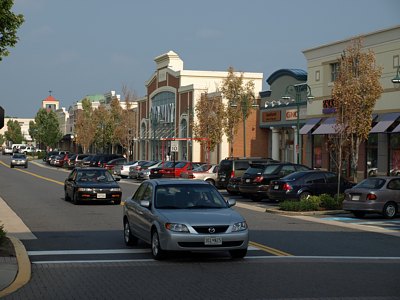
|
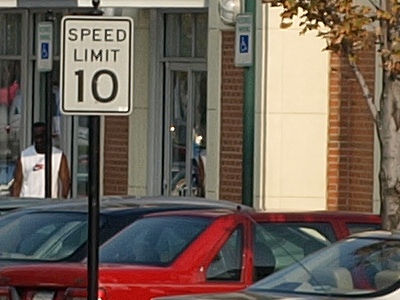
| |
| [1] 42 mm, 1/800 s at F/5.6 (-0.3 EV) [full frame] | ||

|

| |
| [2] 20 mm, 1/250 s at F/7.1 (-0.3 EV) | ||
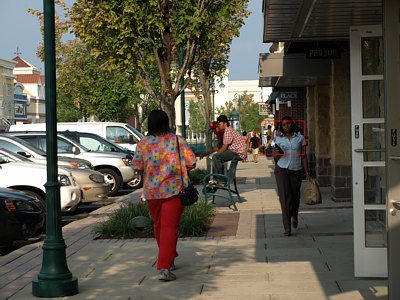
|

| |
| [3] 42 mm, 1/400 s at F/6.3 (-0.3 EV) [full frame] | ||
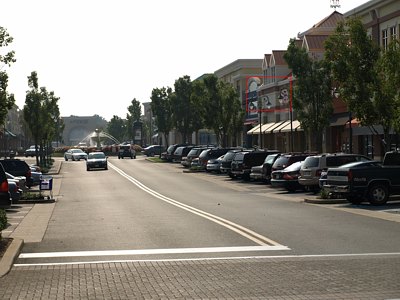
|
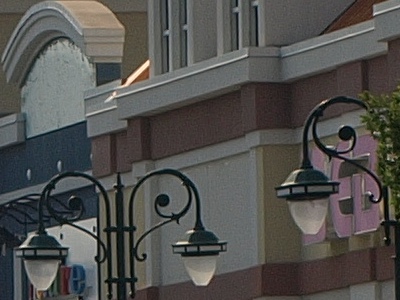
| |
| [4] 42 mm, 1/800 s at F/6.3 (-0.3 EV) [full frame] | ||
|
Nothing short of outstanding — the small lens, combined with noise filtering turned off, resulted in resolution which is quite hard to believe. Colors are good, tonality most pleasing — the only possible problems may arise from a very wide tonal range of the scene. This sensor seems to require a bit more caution in protecting the highlights than the Kodak CCDs used in previous Olympus models did. A small price to pay. Don't just listen to me — check for yourself; some of the captions contain links to full originals straight from the camera. Just be prepared for your jaw to drop. The last sample, while least attractive than others, has been included to show how the lens performs against the light, with the sun almost in the frame, and the sky — paper-white. A good job, I would say: no flare, no washed-out shadows, no chromatic aberration or sensor artifacts at high-contrast transitions. Most of the early experimentation with the E-510 was done in my patio, where this year my wife and I are growing some flowers, tomatoes and cucumbers instead of, like most of the time, just weeds. Close and convenient. All patio pictures were taken in aperture priority, with white balance at 5300°K (sunny). |
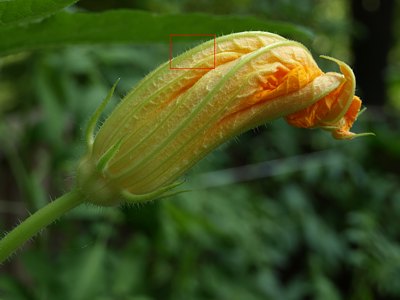
|
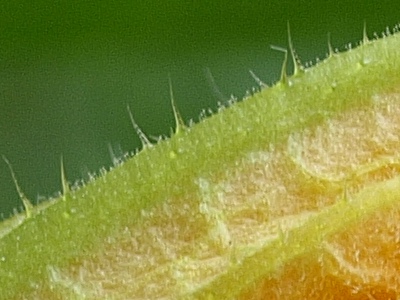
| |
| [5] 14-42 mm F/3.5-5.6 ZD ED at 42 mm; AP (-0.3 EV): 1/100 s at F/6.3, ISO 100, sharpness V-1, contrast and saturation V±0; noise filter off [full frame] | ||
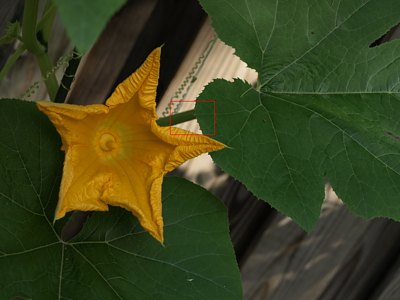
|
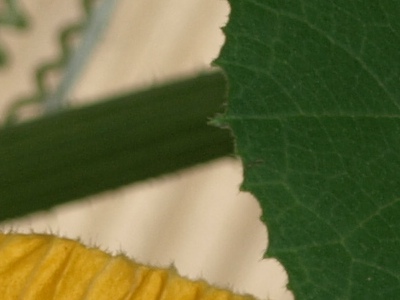
| |
| [6] 14-42 mm F/3.5-5.6 ZD ED at 42 mm; AP (-0.7 EV): 1/100 s at F/5.6, ISO 100, sharpness N-2, contrast and saturation N-1, noise filter at Low | ||
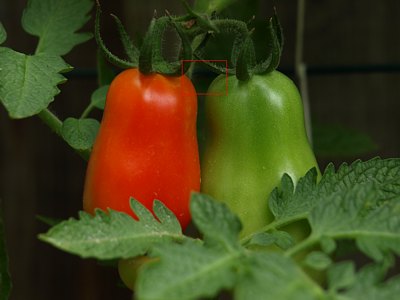
|
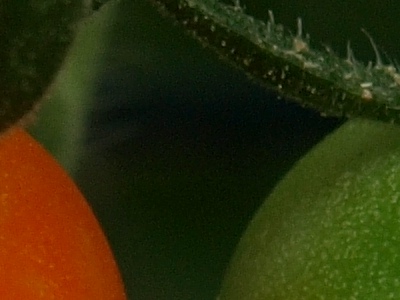
| |
| [7] 40-150 mm F/4.0-5.6 ZD ED at 150 mm; AP (-0.3 EV): 1/40 s at F/6.3, ISO 200, sharpness V-1, contrast and saturation V±0; noise filter off [full frame] | ||
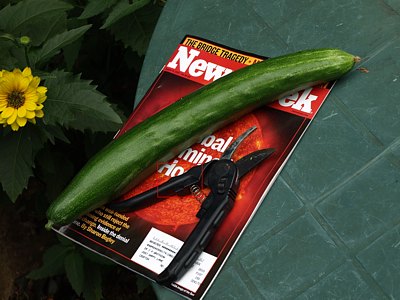
|
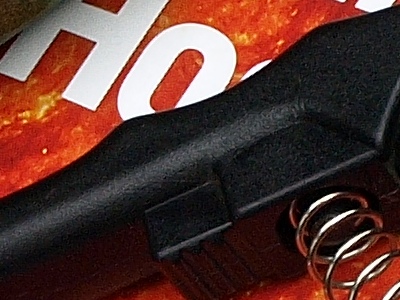
| |
| [8] 14-42 mm F/3.5-5.6 ZD ED at 39 mm; AP (-0.3 EV): 1/80 s at F/8, ISO 400, sharpness V-1, contrast and saturation V±0; noise filter off [full frame] | ||
|
Note that most of these images used the Vivid picture mode: they were shot while I was experimenting with various settings. Now I see that the Natural mode would be better: both contrast and saturation are too high — I'll have to reduce both a bit in postprocessing. Except for that, there is nothing to complain about. The pictures are quite pleasing right off the camera, and the amount of detail, where applicable (i.e., in focus) — impressive. (Look at #8 in full size: this is ISO 400!) A few more, this time in my flavor of the Natural Picture Mode; all shot with the 50 mm Macro ZD (did I mention this is possibly the best lens I've ever used?): |
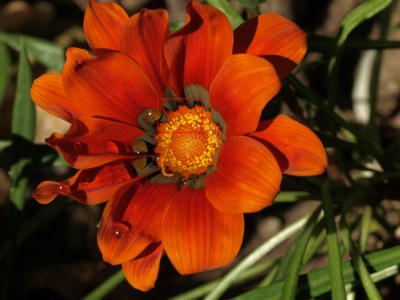
|
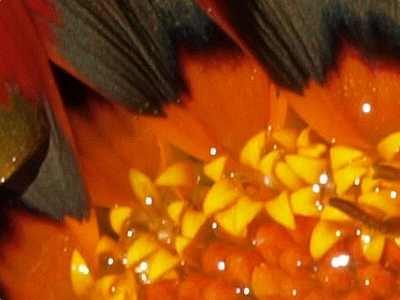
| |
| [9] 50 mm F/2.0 Macro ZD; AP (-0.3 EV): 1/60 s at F/16, ISO 100, sharpness N-2, contrast N-2, saturation N±0, NF off, WB at 5300°K, handheld. | ||
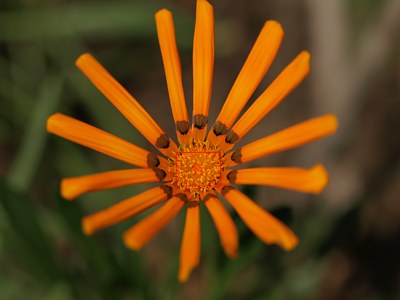
|
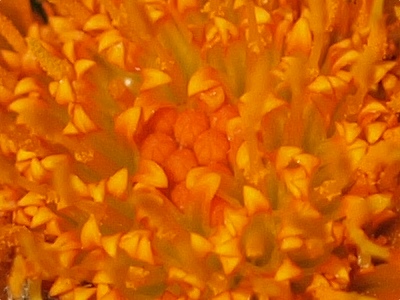
| |
| [10] 50 mm F/2.0 Macro ZD; AP (-0.3 EV): 1/2500 s at F/2.8, ISO 100, sharpness N-2, contrast N-2, saturation N±0, NF off, WB at 5300°K, handheld. | ||
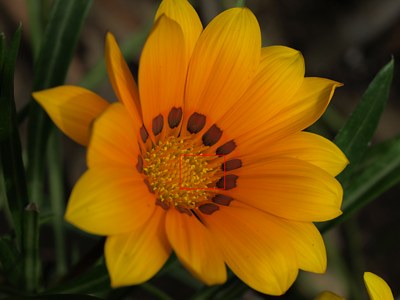
|
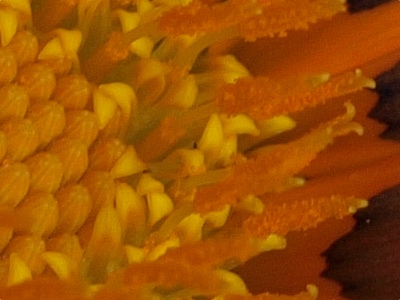
| |
| [11] 50 mm F/2.0 Macro ZD; AP (-0.3 EV): 1/160 s at F/8, ISO 100, sharpness N-2, contrast N-2, saturation N±0, NF off, WB at 5300°K, handheld. | ||
|
Mind it: these are JPEGs straight out-of-camera, no tonal adjustment. While I had to choose these three from a few tens of frames, this was because the shallow depth of field at these distances, handheld, makes shooting tricky; exposure and color were right on the nose in all. Note that only -0.3 EV of exposure compensation was needed to protect the red channel from overloading (confirmed by histogram inspection); with the E-500 I needed -0.7 EV under these circumstances. | |
|
Not all my experiences with flowers were so peachy: shooting a Morning Glory near dusk resulted in the flower being hopelessly dark-blue instead of purple, see the thumbnail on the right. I have yet to find a camera, Olympus or not, which would render this right, or even close. |
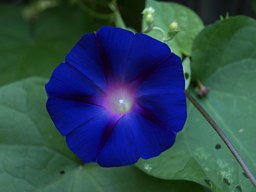
|
|
Horsehead Wetlands Center The place has been renamed to Chesapeake Bay Environmental Center, but I like the old name better. This is where I often take a new piece of gear to try it out, with a nice area to explore and a complete privacy. Here are a few images from the E-510. Pictures in this section were all taken with the 14-42 mm ZD ED lens, aperture priority. White balance was set to 5300°K, picture mode to Natural, sharpness atN-1, contrast — N-2. Noise filtering off. Images saved as HQ (1:4) JPEGs. | |
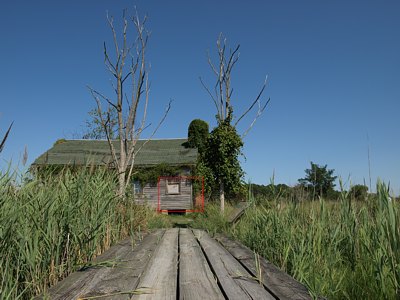
|
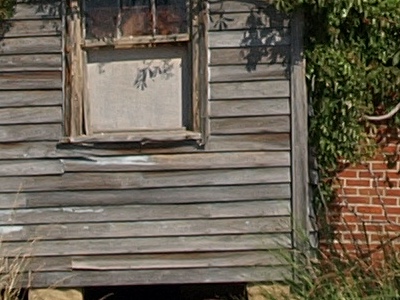
| |
| [12] 14 mm; AP (-0.7 EV): 1/320 s at F/9, ISO 100 | ||
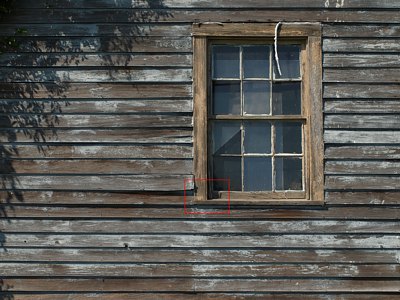
|
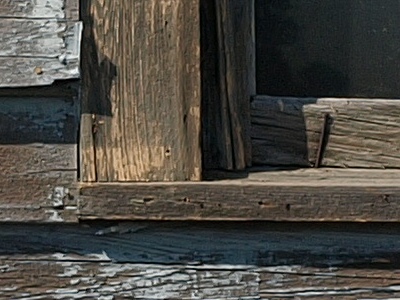
| |
| [13] 34 mm; AP (-0.7 EV): 1/640 s at F/5.6, ISO 100 | ||
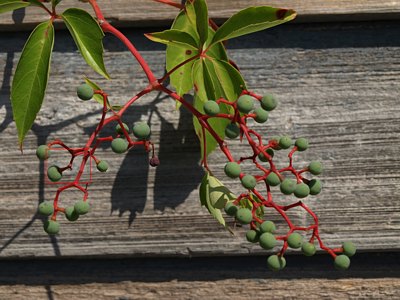
|
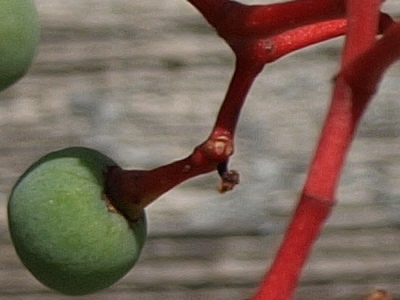
| |
| [14] 42 mm; AP (-0.7 EV): 1/400 s at F/8, ISO 100 | ||
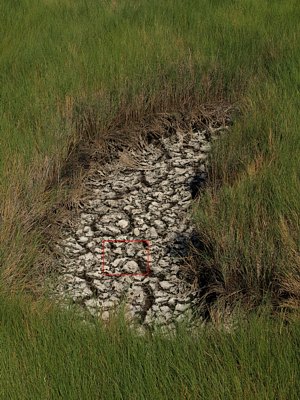
|
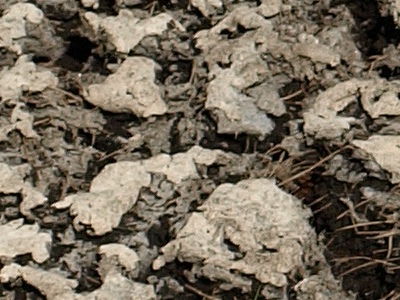
| |
| [15] 37 mm; AP (-0.7 EV): 1/640 s at F/8, ISO 100 |
|
Not much to add here; switching to Natural makes the color more real, indeed. Moving contrast two notches down from there and using my bright-sun exposure compensation of -0.7 EV brings the color and tonality close to those I was getting under these circumstances from the E-500. Oops: in sample #14 there is a clear sign of oversharpening, a white bounce area along the red stalk in the top-right corner. This is the first sign of that effect I've seen so far from this camera, and a clear sign to set the sharpening N-2, a notch below the one applied here. It is not just the autumn foliage, but the general character of sunlight which makes October my favorite month for outdoor photography in Maryland. These are the conditions under which I like most the "Olympus colors". The E-500 (and E-300 before that) excelled in this, so I was, understandably, quite anxious to see how the E-510 delivers here. (Yes, I did have my doubts!) Here is a grab bag of casual shots chosen from my October and November archives. |
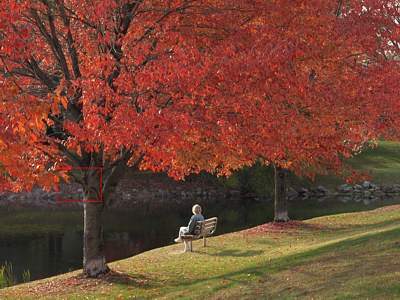
|
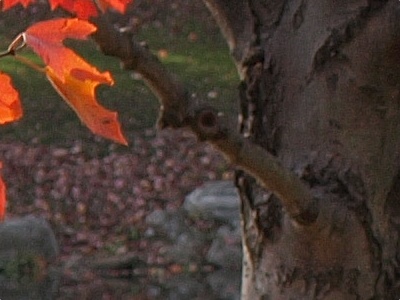
| |
| [16] 14-54 mm F/2.8-3.5 ZD at 54 mm; aperture priority (-0.3 EV): 1/160 s at F/5.6, ISO 100; WB at 5300°K (sunny); contrast N-2, sharpness N-1, saturation N±0, NF off [postprocessed XGA] | ||
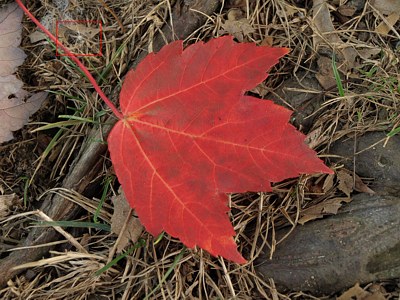
|
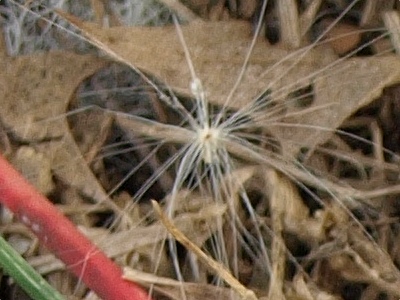
| |
| [17] 14-42 mm F/3.5-5.6 ZD at 42 mm; aperture priority (0 EV): 1/50 s at F/7.1, ISO 400; WB at 5300°K (sunny); contrast N-2, sharpness N-2, saturation N±0, NF off. | ||
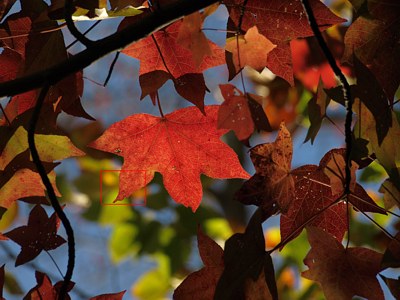
|
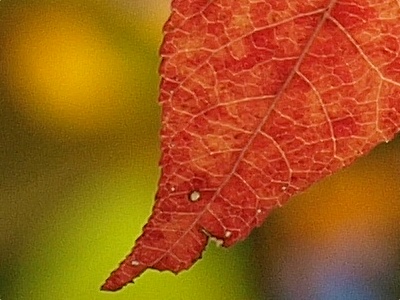
| |
| [18] 40-150 mm F/4.0-5.6 ZD at 150 mm; aperture priority (-0.3 EV): 1/1000 s at F/5.6, ISO 400; WB at 5300°K (sunny); contrast N-2, sharpness N-1, saturation N±0, NF off [full frame] | ||
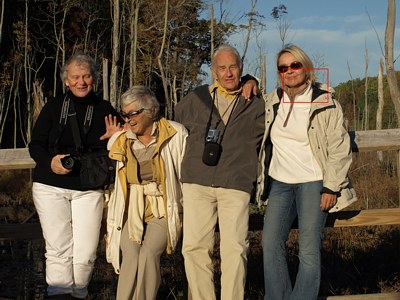
|
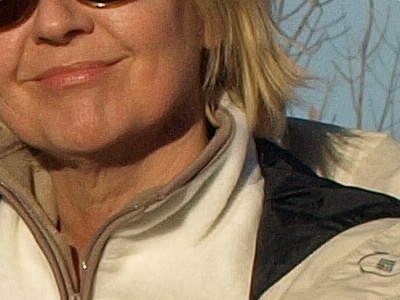
| |
| [19] 40-150 mm F/4.0-5.6 ZD at 40 mm; aperture priority (-0.3 EV): 1/160 s at F/8, ISO 400; WB at 5300°K (sunny); contrast N-2, sharpness N-1, saturation N±0, NF off. | ||
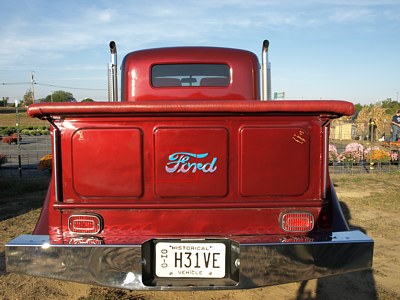
|
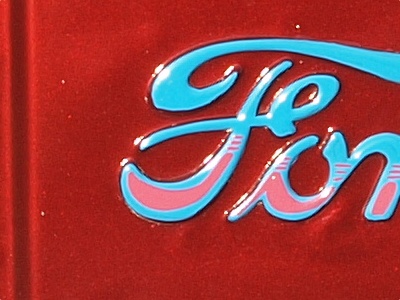
| |
| [20] 14-42 mm F/3.5-5.6 ZD at 14 mm; aperture priority (0 EV): 1/50 s at F/7.1, ISO 400; WB at 5300°K (sunny); contrast N-2, sharpness N-2, saturation N±0, NF off. | ||
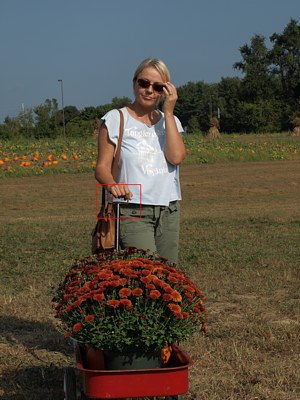
|
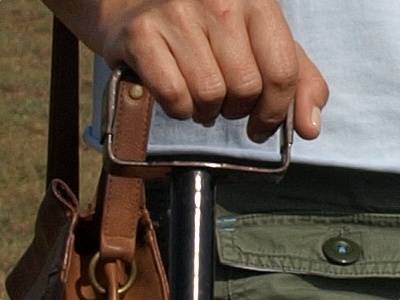
| |
| [21] 40-150 mm F/4.0-5.6 ZD at 40 mm; aperture priority (-0.7 EV): 1/320 s at F/11, ISO 100; WB at 5300°K (sunny); contrast N-2, sharpness N-2, saturation N±0, NF off. |
|
It turns out, after all, that my worries were unjustified: those who are used to rich, warm hues delivered by Kodak sensors in previous E-System cameras, will get them out of the E-510 (or E-410). As a byline, check the original of [18] — very pleasing out-of-focus rendering ("bokeh"), and the amount of (tight and even) noise at ISO 400 is just right for a "natural", non-digital, effect. While the reason says that all sensors perform best at the base ISO setting, with the E-510 I find myself more and more using the ISO 400, just to get this look. Well, it may be just something in my head... In this image, shot late evening under a tree canopy, I had to resort to ISO 1600, choosing any penalties this may bring over camera/subject shake. Here is an example. |
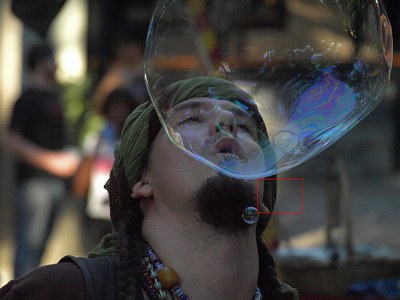
|
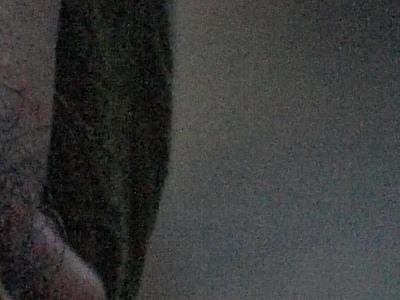
| |
| [22] 40-150 mm F/4.0-5.6 ZD at 150 mm; aperture priority (-0.7 EV): 1/500 s at F/5.6, ISO 1600. Sharpness M-2, contrast M-2, saturation M±0; NF off; WB at 5300°K (sunny) [[postprocessed XGA] | ||
|
Noise levels are quite low for this ISO, and can be reduced further in postprocessing, if needed (e.g., with use of a Neat Image plugin). Yes, there is clearly some banding here — visible in the processed XGA-sized version (check the out-of-focus black sweater at top left, and the area below the soap bubble). Overall, however, I'm not unhappy with the results. Another ISO 1600 sample; this time a night view of the U.S. Capitol in Washington, DC. This is a shot I wasn't planning to take, having brought no tripod along; both ISO 1600 and image stabilization were what made this picture possible. |
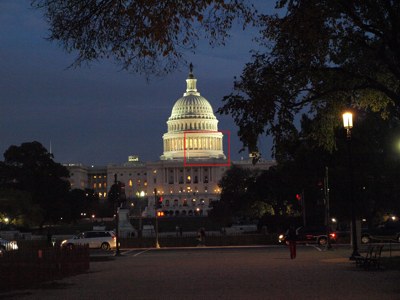
|
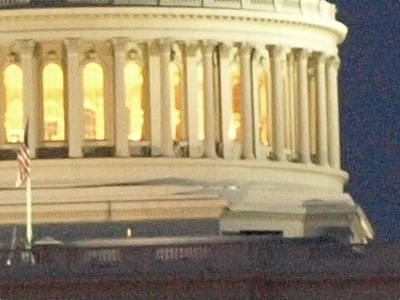
| |
| [23] 14-42 mm F/3.5-5.6 ZD at 42 mm; aperture priority (no compensation): 1/8 s at F/5.6, ISO 1600, handheld with image stabilization. Sharpness M-1, contrast M-2, saturation M±0; NF off [full frame] | ||
|
Aware of the statistical nature of camera shake, I took four frames of this scene; two were free of that effect — consistent with my expectations at a shutter speed ten times slower than the "generally accepted" limit of 1/80 s applicable to this focal length. Note that I'm keeping noise filtering off here (as well as in most of my other ISO 1600 shots): the filtering addresses (at the expense of resolution) the magnitude of the noise — which I do not find too objectionable; what is much worse, again, is the banding and clustering of the noise pattern, and filtering does not address that (which I was able to check both in- and out-of-camera). Have a look at the full frame; note the pink alternating with blue in the sky, or similar effects in the foreground pavement. Still, a respectable job, and I was quite happy with the postprocessed image printed to 20×27 cm or 8×11". (And yes, I straightened the horizon in the process, oops!) Noise banding and clustering effects are much less obvious if the subject is "busy", i.e., containing lots of detail and devoid of large, uniform areas. Here is a good example of what the E-510 can deliver at ISO 1600 under such circumstances. |
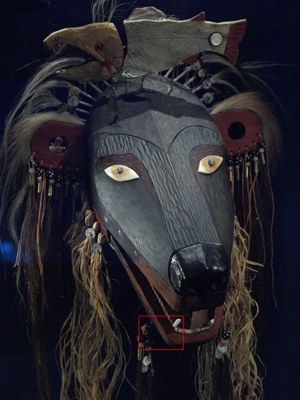
|
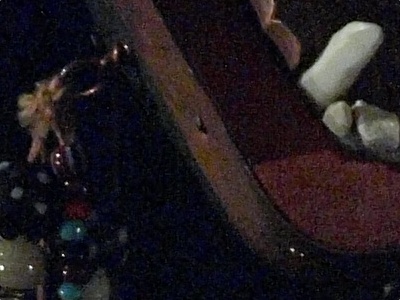
| |
| [24] 50 mm F/2.0 Macro ZD; aperture priority (-0.3 EV): 1/15 s at F/4, ISO 1600, handheld, IS on. Sharpness M-1, contrast M-2, saturation M±0; NF off; WB at 3000°K (tungsten) [full frame] |
|
While I haven't tried, I wouldn't be afraid to print this image at 12×16" (30×40 cm). You don't have to trust me in that, try the full, original frame. More E-510 images Other pages on my site with images from the E-510:
|

|
My other articles related to the |
|
Evolt® and Olympus® are registered trademarks of Olympus Corporation.
This page is not sponsored or endorsed by Olympus (or anyone else) and presents solely the views of the author. |
| Home: wrotniak.net | Search this site | Change font size |
| Posted 2007/08/12; last updated 2007/11/20 | Copyright © 2007 by J. Andrzej Wrotniak |